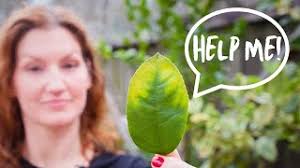
Breaking News
 The preventable plague: How man-made poisons are fueling a Parkinson's epidemic
The preventable plague: How man-made poisons are fueling a Parkinson's epidemic
 Polar vortex unleashes historic cold: Record lows, travel chaos and crop threats
Polar vortex unleashes historic cold: Record lows, travel chaos and crop threats
 Michael Burry's AI Depreciation Warning
Michael Burry's AI Depreciation Warning
 Researchers want to drop lab grown brains into video games
Researchers want to drop lab grown brains into video games
Top Tech News
 Blue Origin New Glenn 2 Next Launch and How Many Launches in 2026 and 2027
Blue Origin New Glenn 2 Next Launch and How Many Launches in 2026 and 2027
 China's thorium reactor aims to fuse power and parity
China's thorium reactor aims to fuse power and parity
 Ancient way to create penicillin, a medicine from ancient era
Ancient way to create penicillin, a medicine from ancient era
 Goodbye, Cavities? Scientists Just Found a Way to Regrow Tooth Enamel
Goodbye, Cavities? Scientists Just Found a Way to Regrow Tooth Enamel
 Scientists Say They've Figured Out How to Transcribe Your Thoughts From an MRI Scan
Scientists Say They've Figured Out How to Transcribe Your Thoughts From an MRI Scan
 SanDisk stuffed 1 TB of storage into the smallest Type-C thumb drive ever
SanDisk stuffed 1 TB of storage into the smallest Type-C thumb drive ever
 Calling Dr. Grok. Can AI Do Better than Your Primary Physician?
Calling Dr. Grok. Can AI Do Better than Your Primary Physician?
 HUGE 32kWh LiFePO4 DIY Battery w/ 628Ah Cells! 90 Minute Build
HUGE 32kWh LiFePO4 DIY Battery w/ 628Ah Cells! 90 Minute Build
 What Has Bitcoin Become 17 Years After Satoshi Nakamoto Published The Whitepaper?
What Has Bitcoin Become 17 Years After Satoshi Nakamoto Published The Whitepaper?
What Your Citrus Leaves Are DESPERATELY Trying to Tell You

Growing citrus trees is easier when you know how to read the signs—especially when your leaves start acting up. Yellowing, curling, brown spots… these aren't just random problems; they're your tree's way of telling you something is off. Whether it's citrus pests and diseases, nutrient deficiencies, or watering mistakes, I'll break down exactly what to look for and how to fix it. If you want to know how to grow citrus successfully, start by listening to what your leaves are desperately trying to say!

 Unbanked In A Connected World
Unbanked In A Connected World

